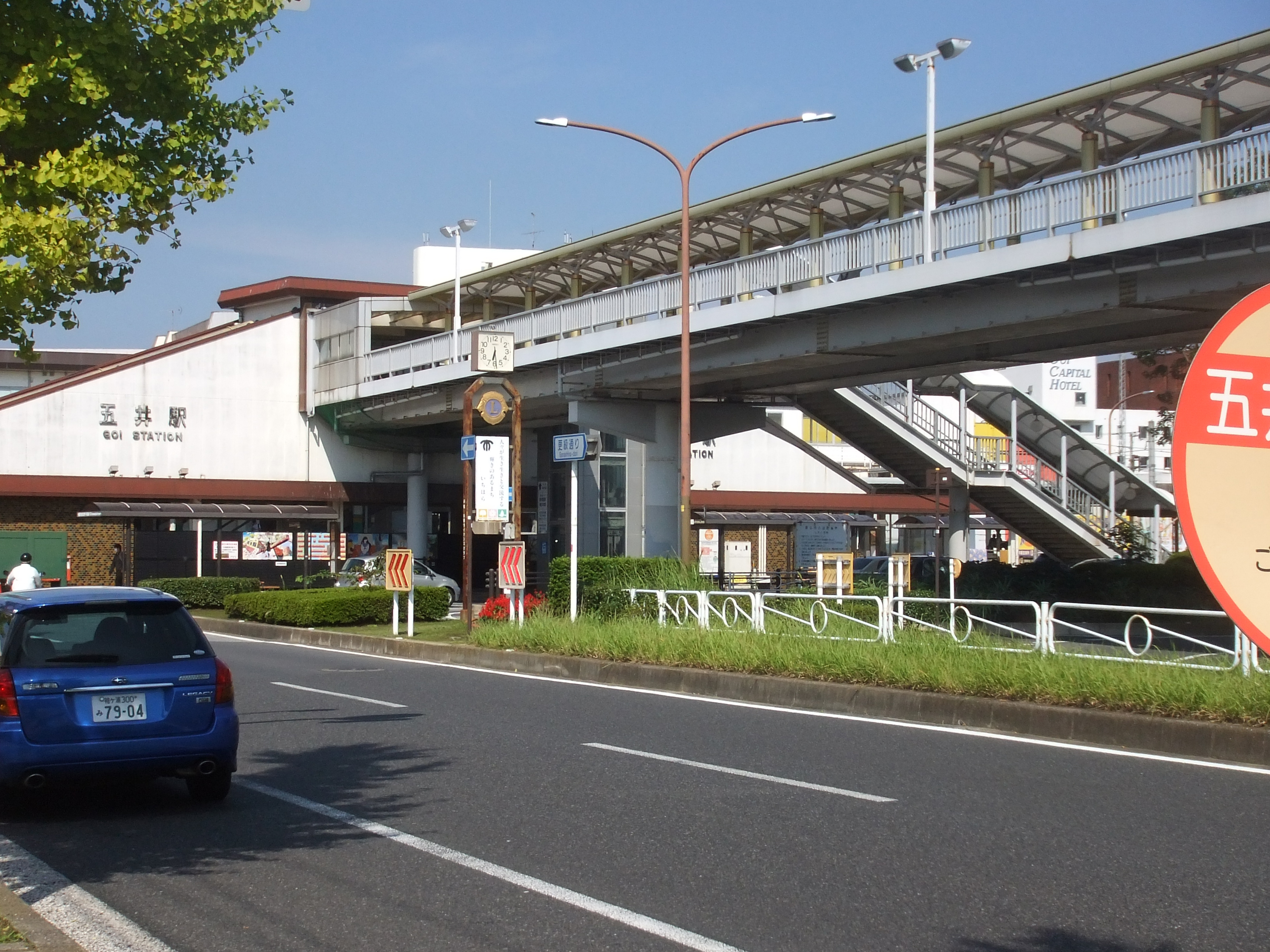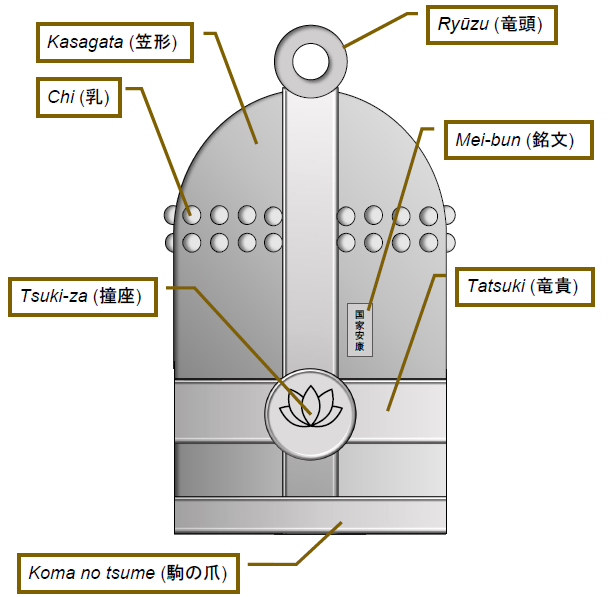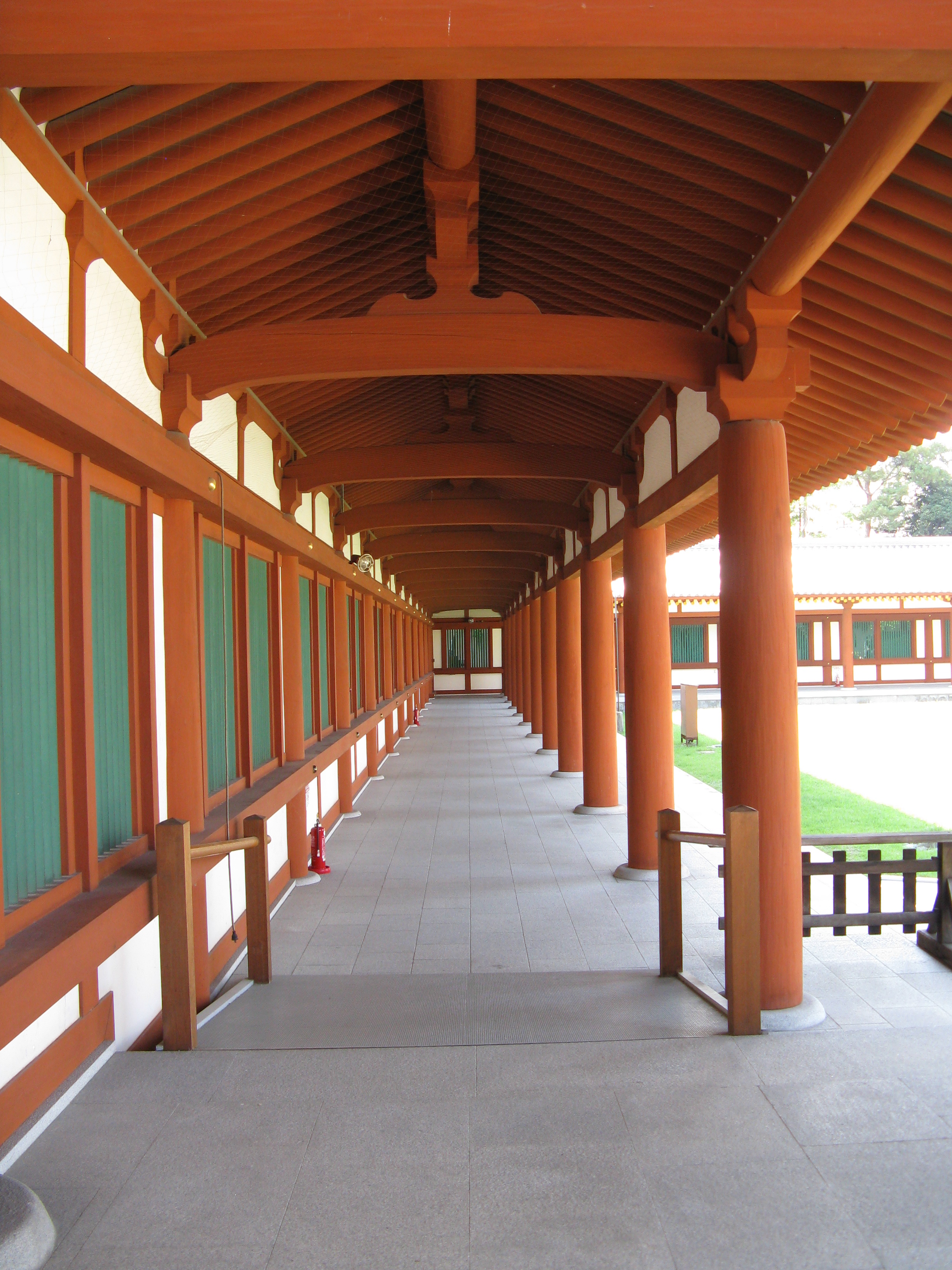|
Kazusa Kokubunni-ji
The is the ruins of a Buddhist nunnery located in the city of Ichihara, Chiba, Japan which was part of the provincial temple complex ("kokubunji") of former Kazusa Province.The temple ruins were designated a National Historic Site in 1983, with the area under protection expanded in 1985. Overview The ''Shoku Nihongi'' records that in 741, as the country recovered from a major smallpox epidemic, Emperor Shōmu ordered that a monastery and nunnery be established in every province, the . The Kazusa Kokubun-niji was located on the northern bank of the Yōrō River, in an area with a high concentration of ''kofun'' and ancient sites, and is separated from the Kazusa Kokubun-ji, which was located a short distance to the southwest, by a shallow valley. After several archaeological excavations starting in 1948, the layout of the temple was confirmed. The total area of the temple complex was 372 meters north-to-south by 285 meters east-to-west, for a total area of 123,000 square ... [...More Info...] [...Related Items...] OR: [Wikipedia] [Google] [Baidu] |
Ichihara, Chiba
is a city, located in Chiba Prefecture, Japan. , the city had an estimated population of 274,117 in 128,316 households and a population density of 240 persons per km². The total area of the city is . The city is home, together with the city of Chiba, to the JEF United football club. The whole city is also parts of Greater Tokyo Area. History The area of modern Ichihara is the center of ancient Kazusa province. The ruins of the Nara period Kazusa Kokubun-ji provincial temple have been found within the borders of Ichihara, although the exact location of the Nara-period provincial capital remains uncertain. During the Sengoku period, the area was contested between the Chiba clan to the north, and the Satomi clan to the south. During the Edo period, the area was divided between Goi Domain, Tsurumaki Domain and large areas of ''tenryō'' territory controlled directly by the Tokugawa shogunate and administered by various ''hatamoto.'' City formation * During the Meiji period, the ... [...More Info...] [...Related Items...] OR: [Wikipedia] [Google] [Baidu] |
Kazusa Kokubun-ji
is a Buddhist temple in Ichihara, Chiba, Japan, belonging to the Shingon-shu Buzan-ha sect, and is the provincial temple ("kokubunji") of former Kazusa Province. The present temple is of uncertain foundation, but claims to be the direct descendant of the original Nara period ''kokubunji'' temple which fell into ruins sometime in the Muromachi period. The Nara-period temple ruins were designated a National Historic Site in 1929, with the area under protection expanded in 1979 due to additional archaeological finds. Overview The ''Shoku Nihongi'' records that in 741 AD, as the country recovered from a major smallpox epidemic, Emperor Shōmu ordered that a monastery and nunnery be established in every province, the . The Kazusa Kokubun-ji was located on the northern bank of the Yōrō River, in an area with a high concentration of ''kofun'' and ancient sites. The ancient temple is mentioned in historical records to the Oei era (1394-1427), but appears to have fallen into ruin af ... [...More Info...] [...Related Items...] OR: [Wikipedia] [Google] [Baidu] |
8th-century Establishments In Japan
The 8th century is the period from 701 ( DCCI) through 800 ( DCCC) in accordance with the Julian Calendar. The coast of North Africa and the Iberian Peninsula quickly came under Islamic Arab domination. The westward expansion of the Umayyad Empire was famously halted at the siege of Constantinople by the Byzantine Empire and the Battle of Tours by the Franks. The tide of Arab conquest came to an end in the middle of the 8th century.Roberts, J., ''History of the World'', Penguin, 1994. In Europe, late in the century, the Vikings, seafaring peoples from Scandinavia, begin raiding the coasts of Europe and the Mediterranean, and go on to found several important kingdoms. In Asia, the Pala Empire is founded in Bengal. The Tang dynasty reaches its pinnacle under Chinese Emperor Xuanzong. The Nara period begins in Japan. Events * Estimated century in which the poem Beowulf is composed. * Classical Maya civilization begins to decline. * The Kombumerri burial grounds are founded. * ... [...More Info...] [...Related Items...] OR: [Wikipedia] [Google] [Baidu] |
History Of Chiba Prefecture
is a prefecture of Japan located in the Kantō region of Honshu. Chiba Prefecture has a population of 6,278,060 (1 June 2019) and has a geographic area of . Chiba Prefecture borders Ibaraki Prefecture to the north, Saitama Prefecture to the northwest, and Tokyo to the west. Chiba is the capital and largest city of Chiba Prefecture, with other major cities including Funabashi, Matsudo, Ichikawa and Kashiwa. Chiba Prefecture is located on Japan's eastern Pacific coast to the east of Tokyo, and is part of the Greater Tokyo Area, the most populous metropolitan area in the world. Chiba Prefecture largely consists of the Bōsō Peninsula, which encloses the eastern side of Tokyo Bay and separates it from Kanagawa Prefecture. Chiba Prefecture is home to Narita International Airport, the Tokyo Disney Resort, and the Keiyō Industrial Zone. Etymology The name of Chiba Prefecture in Japanese is formed from two kanji characters. The first, , means "thousand" and the second, means "le ... [...More Info...] [...Related Items...] OR: [Wikipedia] [Google] [Baidu] |
Nara Period
The of the history of Japan covers the years from CE 710 to 794. Empress Genmei established the capital of Heijō-kyō (present-day Nara). Except for a five-year period (740–745), when the capital was briefly moved again, it remained the capital of Japanese civilization until Emperor Kanmu established a new capital, Nagaoka-kyō, in 784, before moving to Heian-kyō, modern Kyoto, a decade later in 794. Japanese society during this period was predominantly agricultural and centered on village life. Most of the villagers followed Shintō, a religion based on the worship of natural and ancestral spirits named ''kami.'' The capital at Nara was modeled after Chang'an, the capital city of the Tang dynasty. In many other ways, the Japanese upper classes patterned themselves after the Chinese, including adopting the Chinese writing system, Chinese fashion, and a Chinese version of Buddhism. Literature Concentrated efforts by the imperial court to record its history produced the ... [...More Info...] [...Related Items...] OR: [Wikipedia] [Google] [Baidu] |
Buddhist Temples In Chiba Prefecture
Buddhism ( , ), also known as Buddha Dharma and Dharmavinaya (), is an Indian religion or philosophical tradition based on teachings attributed to the Buddha. It originated in northern India as a -movement in the 5th century BCE, and gradually spread throughout much of Asia via the Silk Road. It is the world's fourth-largest religion, with over 520 million followers (Buddhists) who comprise seven percent of the global population. The Buddha taught the Middle Way, a path of spiritual development that avoids both extreme asceticism and hedonism. It aims at liberation from clinging and craving to things which are impermanent (), incapable of satisfying ('), and without a lasting essence (), ending the cycle of death and rebirth (). A summary of this path is expressed in the Noble Eightfold Path, a training of the mind with observance of Buddhist ethics and meditation. Other widely observed practices include: monasticism; "taking refuge" in the Buddha, the , and the ; and ... [...More Info...] [...Related Items...] OR: [Wikipedia] [Google] [Baidu] |
List Of Historic Sites Of Japan (Chiba)
This list is of the Monuments of Japan, Historic Sites of Japan located within the Prefectures of Japan, Prefecture of Chiba Prefecture, Chiba. National Historic Sites As of 1 July 2021, thirty-one Sites have been Cultural Properties of Japan, designated as being of national Values (heritage), significance (including one *List of Special Places of Scenic Beauty, Special Historic Sites and Special Natural Monuments, Special Historic Site). , align="center", Torikakenishi Shell Mound''Torikakenishi kaizuka'' , , Funabashi , , , , , , , , , , - Prefectural Historic Sites As of 1 May 2020, eighty Sites have been designated as being of prefectural importance. Municipal Historic Sites As of 1 May 2020, a further three hundred and eighty-eight Sites have been designated as being of municipal importance. See also * Cultural Properties of Japan * Shimōsa Province * Kazusa Province * Awa Province (Chiba), Awa Province * National Museu ... [...More Info...] [...Related Items...] OR: [Wikipedia] [Google] [Baidu] |
JR East
The is a major passenger railway company in Japan and is the largest of the seven Japan Railways Group companies. The company name is officially abbreviated as JR-EAST or JR East in English, and as in Japanese. The company's headquarters are in Yoyogi, Shibuya, Tokyo, and next to the Shinjuku Station. It is listed in the Tokyo Stock Exchange (it formerly had secondary listings in the Nagoya and Osaka stock exchanges), is a constituent of the TOPIX Large70 index, and is also one of the three only Japan Railways Group constituents of the Nikkei 225 index, the other being JR Central and JR West. History JR East was incorporated on 1 April 1987 after being spun off from the government-run Japanese National Railways (JNR). The spin-off was nominally "privatization", as the company was actually a wholly owned subsidiary of the government-owned JNR Settlement Corporation for several years, and was not completely sold to the public until 2002. Following the breakup, JR East ... [...More Info...] [...Related Items...] OR: [Wikipedia] [Google] [Baidu] |
Goi Station
is a railway station in Ichihara, Chiba, Japan, operated by the East Japan Railway Company (JR East) and the private railway operator Kominato Railway. Lines Goi station is served by the Uchibo Line and the Kominato Line. Station layout The station has a different address for each company. The address for JR East is 2-1-11 Goi-Chūō-Nishi, Ichihara, Chiba, and the address for the Kominato Railway is 1-1-2 Goi-Chūō-Higashi, Ichihara, Chiba. The station has four tracks with two island platforms, one for the Uchibō line and another for the Kominato line. Platforms History The JNR station opened on March 28, 1912. JR East. Retrieved on 17 July 2008. The Kominato Railway station opened on March 7, 1925. Passenger statistics In fiscal 2005, the JR East station was use ...[...More Info...] [...Related Items...] OR: [Wikipedia] [Google] [Baidu] |
Bonshō
, also known as or are large bells found in Buddhist temples throughout Japan, used to summon the monks to prayer and to demarcate periods of time. Rather than containing a clapper, are struck from the outside, using either a handheld mallet or a beam suspended on ropes. The bells are usually made from bronze, using a form of expendable mould casting. They are typically augmented and ornamented with a variety of bosses, raised bands and inscriptions. The earliest of these bells in Japan date to around 600 CE, although the general design is of much earlier Chinese origin and shares some of the features seen in ancient Chinese bells. The bells' penetrating and pervasive tone carries over considerable distances, which led to their use as signals, timekeepers and alarms. In addition, the sound of the bell is thought to have supernatural properties; it is believed, for example, that it can be heard in the underworld. The spiritual significance of means that they play an im ... [...More Info...] [...Related Items...] OR: [Wikipedia] [Google] [Baidu] |
Kairō
Two examples of ''kairō'' , , is the Japanese version of a cloister, a covered corridor originally built around the most sacred area of a Buddhist temple, a zone which contained the ''kondō'' and the '' tō''. Nowadays it can be found also at Shinto shrines and at ''shinden-zukuri'' aristocratic residences. The ''kairō'' and the ''rōmon'' were among the most important among the '' garan'' elements which appeared during the Heian period. The first surrounded the holiest part of the '' garan'', while the second was its main exit. Neither was originally characteristic of Shinto shrines, but in time they often came to replace the traditional shrine surrounding fence called ''tamagaki''. The earliest example of a ''kairō''/''rōmon'' complex can be found at Iwashimizu Hachiman-gū, a shrine now but a former .On the subject of shrine-temple complexes, see the article '' Shinbutsu shūgō''. The ''rōmon'' is believed to have been built in 886, and the ''kairō'' roughly at t ... [...More Info...] [...Related Items...] OR: [Wikipedia] [Google] [Baidu] |





